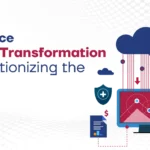Disability insurance plays a crucial role in providing financial support to individuals who are unable to work due to injury or illness. Its evolution in the United States reflects changes in societal attitudes, economic conditions, and the growing understanding of the importance of financial security in the face of unforeseen circumstances. From its humble beginnings to the complex system we have today, disability insurance has undergone significant transformation.
In this article, we will take a comprehensive look at the history and evolution of disability insurance in the United States. From its early days as a voluntary benefit to the introduction of government-backed programs and modern-day private options, we will explore how this essential form of protection has developed.
Outline
- Introduction
- A brief overview of disability insurance and its significance.
- Why understanding its evolution is essential for both employers and individuals.
- Early Beginnings: The Pre-20th Century
- The first instances of disability protection in early America.
- Social attitudes towards disability and work.
- The Rise of Employer-Based Disability Insurance
- How disability insurance became a workplace benefit in the early 1900s.
- The impact of industrialization on workers’ needs for protection.
- The 1930s: The Social Security Act and Government Intervention
- The creation of Social Security Disability Insurance (SSDI).
- The government’s role in providing disability benefits to the working class.
- The 1950s to 1970s: Expanding Coverage and Awareness
- How the disability insurance landscape expanded during the mid-20th century.
- The increase in awareness and recognition of disability rights.
- The Americans with Disabilities Act (ADA) and its Impact on Insurance
- How the ADA of 1990 influenced disability benefits and workplace accommodations.
- Changing perceptions of disability and employment.
- The 2000s: Modern Disability Insurance Products
- The emergence of private disability insurance products and innovations.
- The role of employers and insurers in offering customized coverage.
- The Role of Disability Insurance in a Post-COVID World
- The impact of the COVID-19 pandemic on disability insurance.
- A look at remote work and new considerations for disability insurance.
- The Future of Disability Insurance in the U.S.
- Predictions on where the industry is headed.
- The growing need for inclusive and accessible coverage.
- Common Types of Disability Insurance
- Short-term vs. long-term disability insurance.
- Employer-sponsored vs. individual policies.
- Key Benefits and Coverage Under Disability Insurance
- Financial support during periods of disability.
- Additional services and benefits associated with disability coverage.
- Challenges and Gaps in the Disability Insurance System
- Issues with coverage gaps and eligibility.
- How the industry can improve to serve diverse needs.
- The Impact of Disability Insurance on Workers and Families
- The financial and emotional benefits of having disability coverage.
- Case studies and real-life examples of people helped by disability insurance.
- Disability Insurance and Socioeconomic Factors
- How socioeconomic status impacts access to disability insurance.
- The role of income inequality in the availability of coverage.
- Conclusion
- Summary of the key points discussed in the article.
- The importance of disability insurance for workers in the modern world.
- FAQs
- Common questions regarding disability insurance in the U.S.
Introduction
Disability insurance is a safety net that offers protection to individuals who can no longer work due to a disability, illness, or injury. As one of the cornerstones of financial security, it provides income replacement when a person is unable to perform their job due to health-related reasons. However, it wasn’t always this way. The history of disability insurance in the United States tells the story of a country’s evolving approach to workers’ rights, health care, and social protection.
In this article, we will explore the various stages of disability insurance development, from early attempts at providing protection to the modern systems in place today. The evolution of disability insurance has had profound effects on millions of people, shaping the way we view work, health, and financial security.
Early Beginnings: The Pre-20th Century
In the early days of the United States, there was little to no safety net for workers who became disabled. People who experienced illness or injury had to rely on family, charity, or savings to support themselves. Disability insurance, as we know it today, did not exist.
However, there were some early forms of financial protection that emerged. Benevolent societies, mutual aid organizations, and early unions sometimes provided limited disability benefits to their members. These were often informal arrangements, offering small sums of money to support members who were temporarily unable to work due to illness or injury.
Society in general viewed disability as an unfortunate but often inevitable part of life. People with disabilities were often marginalized, and there were few protections in place for those who couldn’t work. This began to change in the late 19th and early 20th centuries, as the country industrialized and workers began to demand better protection.
The Rise of Employer-Based Disability Insurance
As the U.S. economy shifted from agrarian to industrial, workplace conditions became more dangerous, and the need for disability protection grew. By the early 1900s, many large companies began offering benefits to their workers, including compensation for work-related injuries. This marked the beginning of employer-sponsored disability insurance.
The rise of labor unions and the advocacy for workers’ rights played a crucial role in the expansion of benefits for workers. Industrial accidents, which were unfortunately common at the time, highlighted the need for disability coverage. Companies that could afford to offer insurance to their workers began to do so, recognizing the value of keeping their workforce financially stable during periods of illness or injury.
The 1930s: The Social Security Act and Government Intervention

A significant turning point in the history of disability insurance came in the 1930s, when the U.S. government passed the Social Security Act of 1935. The act aimed to address poverty among older Americans, but it also laid the groundwork for a system of government-backed benefits for those who could not work due to a disability.
In 1956, the Social Security Disability Insurance (SSDI) program was established, providing workers who were disabled and met certain requirements with financial assistance. This marked the first federal-level initiative to provide long-term financial support to disabled individuals.
For the first time, disability was recognized not just as a personal hardship, but as a societal issue that required a collective response. The creation of SSDI provided workers with a sense of security, knowing that there was a safety net in place should they become unable to work.
The 1950s to 1970s: Expanding Coverage and Awareness
As awareness of the needs of people with disabilities grew, so did the scope of disability insurance. The 1950s through the 1970s saw an expansion of both government programs and private insurance options. Employers continued to offer benefits to their workers, and unions fought for better coverage and more comprehensive policies.
In 1972, the Supplemental Security Income (SSI) program was introduced, providing additional financial support to disabled individuals who were unable to qualify for SSDI. This expansion helped fill in some of the gaps left by the original programs.
During this period, the disability rights movement began to gain momentum. Advocates pushed for better access to education, employment, and public services for individuals with disabilities. This was reflected in the growing focus on providing financial assistance through disability insurance programs.
The Americans with Disabilities Act (ADA) and its Impact on Insurance
The passage of the Americans with Disabilities Act (ADA) in 1990 marked another milestone in the evolution of disability insurance. The ADA prohibited discrimination against individuals with disabilities and required employers to make reasonable accommodations for employees with disabilities.
While the ADA itself did not directly create disability insurance programs, it had a profound impact on how employers and insurers viewed people with disabilities. It encouraged more inclusive hiring practices and raised awareness of the financial needs of workers with disabilities. As a result, disability insurance began to be seen not only as a safety net for workers but also as a crucial component of promoting diversity and inclusion in the workplace.
The 2000s: Modern Disability Insurance Products
The 21st century saw the development of more tailored and flexible disability insurance products. Companies began offering a variety of plans to suit the specific needs of different workers. Short-term disability insurance, long-term disability insurance, and supplemental insurance policies became more common, providing greater coverage options for employees.
Private disability insurance providers began to innovate, offering policies that covered a wider range of disabilities, including mental health conditions, which were historically excluded. This shift toward more comprehensive coverage was a response to the growing recognition that disability does not just involve physical impairment but can also involve chronic illnesses, mental health conditions, and neurological disorders.
The Role of Disability Insurance in a Post-COVID World

The COVID-19 pandemic brought new challenges and opportunities for the disability insurance industry. The widespread impact of the virus and its long-term effects on health has prompted many to reconsider how disability insurance can address new and emerging risks. More people are working from home, and insurers are adapting to the unique needs of remote workers.
The pandemic also highlighted the importance of ensuring that workers have access to disability insurance, especially in the face of public health crises. The increased awareness of the risks of long-term illness has prompted discussions on how disability insurance should be expanded and adjusted for modern challenges.
The Future of Disability Insurance in the U.S.
Looking forward, the disability insurance landscape is likely to continue evolving. As the workforce becomes more diverse, including more gig workers and remote employees, the need for flexible and accessible disability insurance products will increase. Employers will continue to explore ways to offer comprehensive and affordable coverage to their workers.
As technology advances, insurers will use data and artificial intelligence to better assess risk and tailor policies. Additionally, the rise of mental health awareness and changes in workplace dynamics will likely push disability insurance products to be more inclusive, covering a broader range of conditions.
Conclusion
The evolution of disability insurance in the United States has been a long and complex journey. From its humble beginnings as a limited workplace benefit to the expansive and diverse system we have today, disability insurance has undergone substantial growth. It has become an essential part of the American social safety net, offering financial security and peace of mind to millions of workers and their families.
As we look to the future, it is clear that disability insurance will continue to evolve in response to new challenges and societal shifts. The ongoing expansion of coverage, the increasing focus on inclusivity, and the recognition of a broader range of disabilities all point to a more secure and comprehensive system in the years to come.
FAQs
- What is disability insurance?
- Disability insurance provides income replacement for individuals who are unable to work due to illness, injury, or disability.
- How has disability insurance evolved over the years?
- Disability insurance has evolved from informal workplace benefits to formal government programs like SSDI and private, customizable insurance options.
- What is the Social Security Disability Insurance (SSDI) program?
- SSDI is a government program that provides financial assistance to workers who become disabled and meet certain criteria.
- What is the Americans with Disabilities Act (ADA)?
- The ADA is a law passed in 1990 that prohibits discrimination against people with disabilities and promotes their inclusion in the workforce.
- How has COVID-19 affected disability insurance?
- The COVID-19 pandemic has highlighted the need for disability insurance, especially as long-term illness and remote work have become more prevalent.










